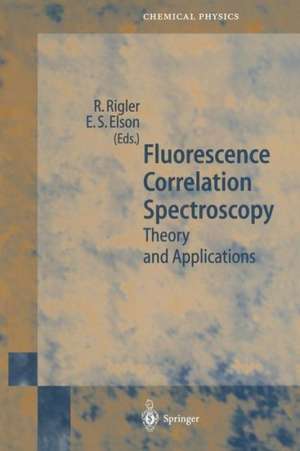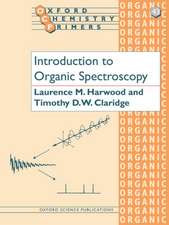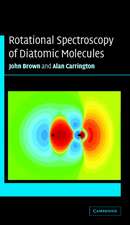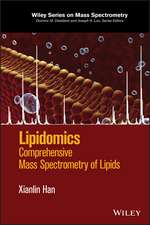Fluorescence Correlation Spectroscopy: Theory and Applications: Springer Series in Chemical Physics, cartea 65
Editat de R. Rigler, E.S. Elsonen Limba Engleză Paperback – 4 oct 2011
Din seria Springer Series in Chemical Physics
- 20%
 Preț: 585.30 lei
Preț: 585.30 lei - 15%
 Preț: 643.00 lei
Preț: 643.00 lei - 15%
 Preț: 635.96 lei
Preț: 635.96 lei - 18%
 Preț: 953.03 lei
Preț: 953.03 lei - 15%
 Preț: 644.63 lei
Preț: 644.63 lei - 15%
 Preț: 638.43 lei
Preț: 638.43 lei - 15%
 Preț: 649.22 lei
Preț: 649.22 lei - 15%
 Preț: 647.40 lei
Preț: 647.40 lei - 15%
 Preț: 638.89 lei
Preț: 638.89 lei - 15%
 Preț: 652.31 lei
Preț: 652.31 lei - 15%
 Preț: 638.43 lei
Preț: 638.43 lei - 15%
 Preț: 637.13 lei
Preț: 637.13 lei - 18%
 Preț: 952.57 lei
Preț: 952.57 lei - 18%
 Preț: 947.85 lei
Preț: 947.85 lei - 15%
 Preț: 636.45 lei
Preț: 636.45 lei - 15%
 Preț: 649.87 lei
Preț: 649.87 lei - 18%
 Preț: 953.65 lei
Preț: 953.65 lei - 18%
 Preț: 894.03 lei
Preț: 894.03 lei - 15%
 Preț: 647.27 lei
Preț: 647.27 lei - 18%
 Preț: 1249.00 lei
Preț: 1249.00 lei - 15%
 Preț: 646.30 lei
Preț: 646.30 lei - 18%
 Preț: 954.14 lei
Preț: 954.14 lei - 24%
 Preț: 1226.82 lei
Preț: 1226.82 lei - 18%
 Preț: 961.72 lei
Preț: 961.72 lei - 18%
 Preț: 1002.31 lei
Preț: 1002.31 lei - 24%
 Preț: 647.25 lei
Preț: 647.25 lei - 18%
 Preț: 888.49 lei
Preț: 888.49 lei - 18%
 Preț: 908.04 lei
Preț: 908.04 lei - 15%
 Preț: 641.38 lei
Preț: 641.38 lei - 15%
 Preț: 585.40 lei
Preț: 585.40 lei - 15%
 Preț: 639.90 lei
Preț: 639.90 lei - 18%
 Preț: 897.02 lei
Preț: 897.02 lei
Preț: 400.47 lei
Nou
Puncte Express: 601
Preț estimativ în valută:
76.63€ • 81.94$ • 63.89£
76.63€ • 81.94$ • 63.89£
Carte tipărită la comandă
Livrare economică 18 aprilie-02 mai
Preluare comenzi: 021 569.72.76
Specificații
ISBN-13: 9783642640186
ISBN-10: 3642640184
Pagini: 512
Ilustrații: XX, 487 p.
Dimensiuni: 155 x 235 x 27 mm
Greutate: 0.71 kg
Ediția:Softcover reprint of the original 1st ed. 2001
Editura: Springer Berlin, Heidelberg
Colecția Springer
Seria Springer Series in Chemical Physics
Locul publicării:Berlin, Heidelberg, Germany
ISBN-10: 3642640184
Pagini: 512
Ilustrații: XX, 487 p.
Dimensiuni: 155 x 235 x 27 mm
Greutate: 0.71 kg
Ediția:Softcover reprint of the original 1st ed. 2001
Editura: Springer Berlin, Heidelberg
Colecția Springer
Seria Springer Series in Chemical Physics
Locul publicării:Berlin, Heidelberg, Germany
Public țintă
ResearchCuprins
1. Introduction.- References.- I FCS in the Analysis of Molecular Interactions.- 2 Fluorescence Correlation Spectroscopy of Flavins and Flavoproteins.- 3 Fluorescence Correlation Spectroscopy in Nucleic Acid Analysis.- 4 Strain-Dependent Fluorescence Correlation Spectroscopy: Proposing a New Measurement for Conformational Fluctuations of Biological Macromolecules.- 5 Applications of FCS to Protein-Ligand Interactions: Comparison with Fluorescence Polarization.- II FCS at the Cellular Level.- 6 FCS-Analysis of Ligand-Receptor Interactions in Living Cells.- 7 Fluorescence Correlation Microscopy (FCM): Fluorescence Correlation Spectroscopy (FCS) in Cell Biology.- 8 FCS and Spatial Correlations on Biological Surfaces.- III Applications in Biotechnology, Drug Screening, and DiagnosticsPart 2 FCS at the Cellular Level.- 9 Dual-Color Confocal Fluorescence Spectroscopy and its Application in Biotechnology.- 10 Nanoparticle Immunoassays: A new Method for Use in Molecular Diagnostics and High Throughput Pharmaceutical Screening based on Fluorescence Correlation Spectroscopy.- 11 Protein Aggregation Associated with Alzheimer and Prion Diseases.- IV Environmental Analysis and Monitoring.- 12 Application of FCS to the Study of Environmental Systems.- 13 Photophysical Aspects of FCS Measurements.- V New Developments and Trends.- 14 Fluorescence Correlation Spectroscopy: Genesis, Evolution, Maturation and Prognosis.- 15 ConfoCor 2 The Second Generation of Fluorescence Correlation Microscopes.- 16 Antibunching and Rotational Diffusion in FCS.- 17 Cross-correlation analysis in FCS.- 18 Cross-correlated Flow Analysis in Microstructures.- 19 Introduction to the Theory of Fluorescence Intensity Distribution Analysis.- 20 Photon Counting Histogram Statistics.- 21 High Order Autocorrelationin Fluorescence Correlation Spectroscopy.- 22 FCS in Single Molecule Analysis.
Textul de pe ultima copertă
This book presents the theoretical background to fluorescence correlation spectroscopy (FCS) and a variety of applications in various fields of science. FCS is based on the detection of single molecules excited to fluorescence in diffraction limited confocal volume elements and the time correlation of stochastic events. It provides ultimate sensitivity in the analysis of molecular processes and has found numerous applications in physics, chemistry and particularly in biomolecular sciences. Its high spatial and temporal resolution has made FCS a powerful tool for the analysis of molecular interactions and kinetics, transport properties due to thermal motion and flow, as well as the physics of the excited state in solution as well as at the cellular level. Its application in high throughput drug screening is using all the potential of this prime analytical tool.
Caracteristici
First book on this important analytical technique










